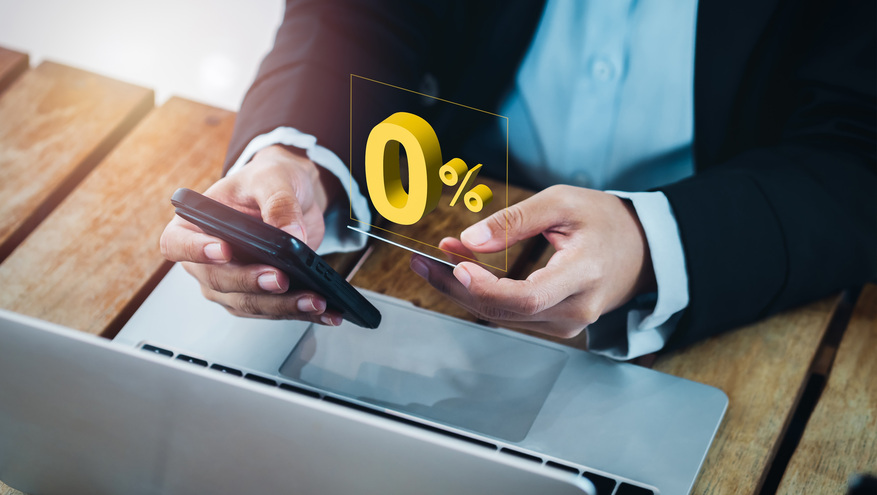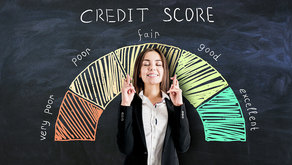In early February, Bank of Utah hosted its annual economic forecast. Our guest speaker, Lauren Henderson, a national economist from Stifel Financial, shared an eyebrow-raising statistic. She said, “Just in the last few months, hundreds of millions of credit card applications have been submitted. It’s essentially one credit card application per every person in this country.”
While the figure is shocking, it’s not entirely surprising. Inflation has made everyday items, such as groceries and gas, more expensive. For some, it has created a need to use credit cards, to buy necessities. For others, it has caused them to seek out cards with rewards and cash-back opportunities, to help them stretch their budgets. Valuable financial tools, credit cards can help you pay your expenses, and even reward you for doing so. You have to use them carefully, though, and you have to be aware of your card’s terms and conditions.
Many of today’s credit cards have a promotional period, with a 0% introductory annual percentage rate (APR) that gives you a set time to pay off your purchases before interest kicks in. Eventually, though, the promotional period will end and your APR will increase. That means you’ll start accruing and owing interest on unpaid balances, including balances or transfers from the promotional period plus any new charges you make.
It’s important to know when your introductory period ends, because in today’s inflationary economy, everyday items aren’t the only things that cost more, credit does, too. In fact, credit card rates are approaching record-highs.
Why Credit Card Interest Rates Are High and How it Affects Cardholders
Most credit cards have variable rates, meaning they fluctuate in response to changes in the market. They are almost all tied to the U.S. prime rate, which banks use as a basis to set rates for different types of loans, including credit cards. The prime rate is influenced by the federal funds rate. This is the rate you often hear about in the news, the one the Federal Reserve uses to manage inflation through the Federal Open Market Committee (FOMC).
In slower economies, the FOMC lowers the rate to encourage more people to borrow, spend and invest, to give the economy a boost. In inflationary times, the FOMC raises the rate to discourage borrowing and slow the economy, to bring inflation under control.
The FOMC raised the federal funds rate seven times in 2022 to help curb inflation and is expected to raise it even more in 2023. In turn, the prime rate has gone up, and so have APRs. As of the end of February 2023, the national average credit card interest rate was 21.89% for new offers and 19.07% for existing accounts, according to WalletHub’s Credit Card Landscape Report.
Let’s see how that 21.89% interest rate affects cardholders.
Just as an example, let’s say your promotional period on a new credit card has ended, and you carry a $5,000 balance. If you pay $100 a month at 21.89% (keep in mind that could go up or down based on the prime rate), it would take you 135 months to pay off just your $5,000 balance, and you would ultimately end up paying an additional $8,450 in interest.
That’s why one of the “rules” of credit cards is to pay off your balance in full every month, but during times of inflation, that’s easier said than done for many people. You can calculate how much you owe, how much interest you are scheduled to pay and how long it will take to pay it all off with the cost-of-debt calculator* below.
*Calculators are provided by third-party providers and are for informational purposes. They are not intended to offer tax, legal or financial advice. We do not guarantee their applicability or accuracy in regard to your personal situation. Use of these calculators does not constitute an application for, commitment to extend, or approval of, a request for credit.
Tips to Manage Your Debt Before Your Introductory Rate Ends
What can you do to be prepared for when your introductory rate ends?
1. Do the math.
Go back to your card’s terms and conditions to find the exact date your introductory period will end. Sometimes you can even find that information on your credit card statement, where you’ll also be able to note what your current balance is. From there, calculate how much you’ll have to pay monthly to get to a $0 balance before your 0% rate expires (assuming you don’t continue to add to the balance).
2. Set goals to keep on track.
Determine how much money you can spend with your credit card before your introductory rate ends, and still be able to pay off your balance. Make sure not to spend any more than that. Depending on where you’re at in your promotional period, this may mean that one of your goals is to stop using your card altogether (if possible).
Another goal could be to set up weekly spending limits, to ensure you have money to put toward your credit card balance. You can set up alerts in online and mobile banking to help you manage your spending.
And remember, if you can’t pay the entire balance before your interest rate goes up (which can be very hard to do when everything costs more and your budget is already tight), try to put at least a few extra dollars toward your balance each month. The lower your balance is when your promotional period ends, the less you’ll owe interest on — every little bit helps.
3. Revise your budget to prioritize paying your balance.
Review your budget, looking at your income and expenses over the past few months. Search for areas where you can cut back. You can repurpose those dollars to go toward your credit card debt.
Financial tools within Bank of Utah’s online banking and mobile app can help you track your budget and watch your trends. If you don’t already have a budget, this is a great place to start.
4. Visit your bank.
A banker can help you review your debts and show you how to create a budget and goals. He or she can also help you understand your credit card agreement and your APR, and can offer insights into cards that may better fit your goals. This is part of our job, and we’re happy to help you. Just reach out.
5. Find an accountability partner.
In addition to reaching out to your banker for help, ask someone to be your “accountability partner.” This can be a spouse or good friend, someone who knows you well, someone who you can trust to share your credit habits, someone who will keep you on track if you find yourself straying from your debt prioritization goals, especially as you near the end of your promotional period.
6. Transfer your balance as a last resort.
If time is running out, you might want to think about transferring your balance to a new card that also has a 0% introductory APR period. If you go this route, read the fine print. Make sure the 0% APR applies to balance transfers — some don’t and some may charge a fee. Make sure the fee makes financial sense.
Also, consider how getting a new card will affect your credit score. Your credit score is partly determined by the age of your credit card accounts. By opening new cards, you lower your average account age, which can hurt your credit score.
So weigh this option carefully.
Final Thoughts
While credit cards are nearing record-high interest rates, remember: Those rates won’t impact you if you maintain a $0 balance at the end of the month. So, once you get to $0, keep up the good habits you adopted to continue to receive the benefits of the card without getting burned by astronomical rates.
And just one last note: We are living through challenging economic times. If you’re struggling with any type of credit card debt, don’t be hard on yourself. Instead of getting discouraged, set goals and ask for help. If you find you’re still having a hard time managing your debts, I encourage you to reach out to a credit counselor. The U.S. Department of Justice maintains a list of approved organizations that can help you manage and learn to pay off your credit card debt.
 Cody Turner is Banking Manager at Bank of Utah’s Provo branch.
Cody Turner is Banking Manager at Bank of Utah’s Provo branch.




